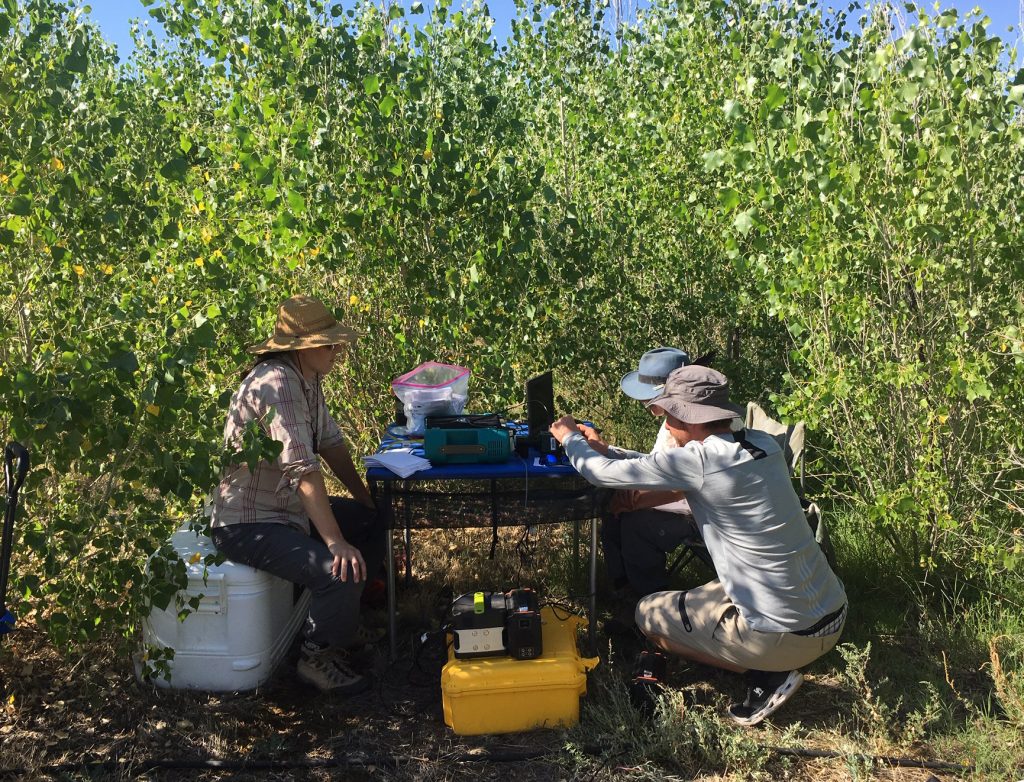Sept. 16, 2019
Scientists with the Merriam-Powell Center for Environmental Research have received a four-year, $859,000 grant from the National Science Foundation to assess how cottonwood trees have evolved to tolerate environmental stresses, including changing temperature and insect herbivory. The results will aid ongoing river restoration projects across the Southwest by helping identify which trees will continue to support healthy ecosystems in a changing world.
Along rivers in the southwestern United States, cottonwood trees provide shade, habitat and food for a wide range of species. As such, cottonwoods influence a much larger community of understory plants, insects, microbes, birds and mammals.
Previous research at NAU has shown that the genetic makeup of a cottonwood tree can impact traits such as leaf size and chemistry, and these traits affect all of the species that depend on the tree. However, in a changing environment, the tree’s genetics are only part of the equation for predicting tree health and ecological effects. Genes may be expressed differently when a tree is exposed to new environmental cues, leading to leaves that are thicker or thinner or more or less protected from insect herbivory. Known as phenotypic plasticity, this change in trait expression might be higher in trees that have evolved to deal with constantly changing climates than in trees from very stable environments.
“A tree’s genes probably set it up not just to do the same thing all the time, but to respond to environmental stresses like hot or dry conditions or insect outbreaks in particular ways that will help it survive. Without ways to predict these responses or their effects on ecosystems, our ability to understand the consequences of climate change is really limited,” said Rebecca Best, the project’s principal investigator and assistant professor in NAU’s School of Earth and Sustainability. “Our hope is that by understanding the stresses this species has experienced in the past, we can better predict what these trees will be able to do in the rapidly changing landscape of the future.”
To investigate these stresses and responses, the researchers will use trees of the same genetic identity planted in three common gardens distributed across a steep environmental gradient from Yuma to Utah.
“NAU is recognized as a world leader in the field of community and ecosystem genetics, and this effort continues an important tradition of excellence in this area,” said David Schultz, NAU vice president of research. “Additionally, this project will use three existing common gardens and build on research initiated by a previous NSF grant.”
The experimental gardens, Emerging Frontiers Macrosystem Biology grant #1340852, were designed by Gery Allan, Thomas Whitham, Kitty Gehring, Kevin Grady and Samuel Cushman at NAU and Kevin Hultine at the Desert Botanical Garden.
Co-principal investigators on the new grant are Whitham, Allan and Richard Lindroth, University of Wisconsin-Madison. Other collaborators include Christopher Doughty and postdoctoral researcher Hillary Cooper. The project is funded by the National Science Foundation under Grant No. 1914433.



